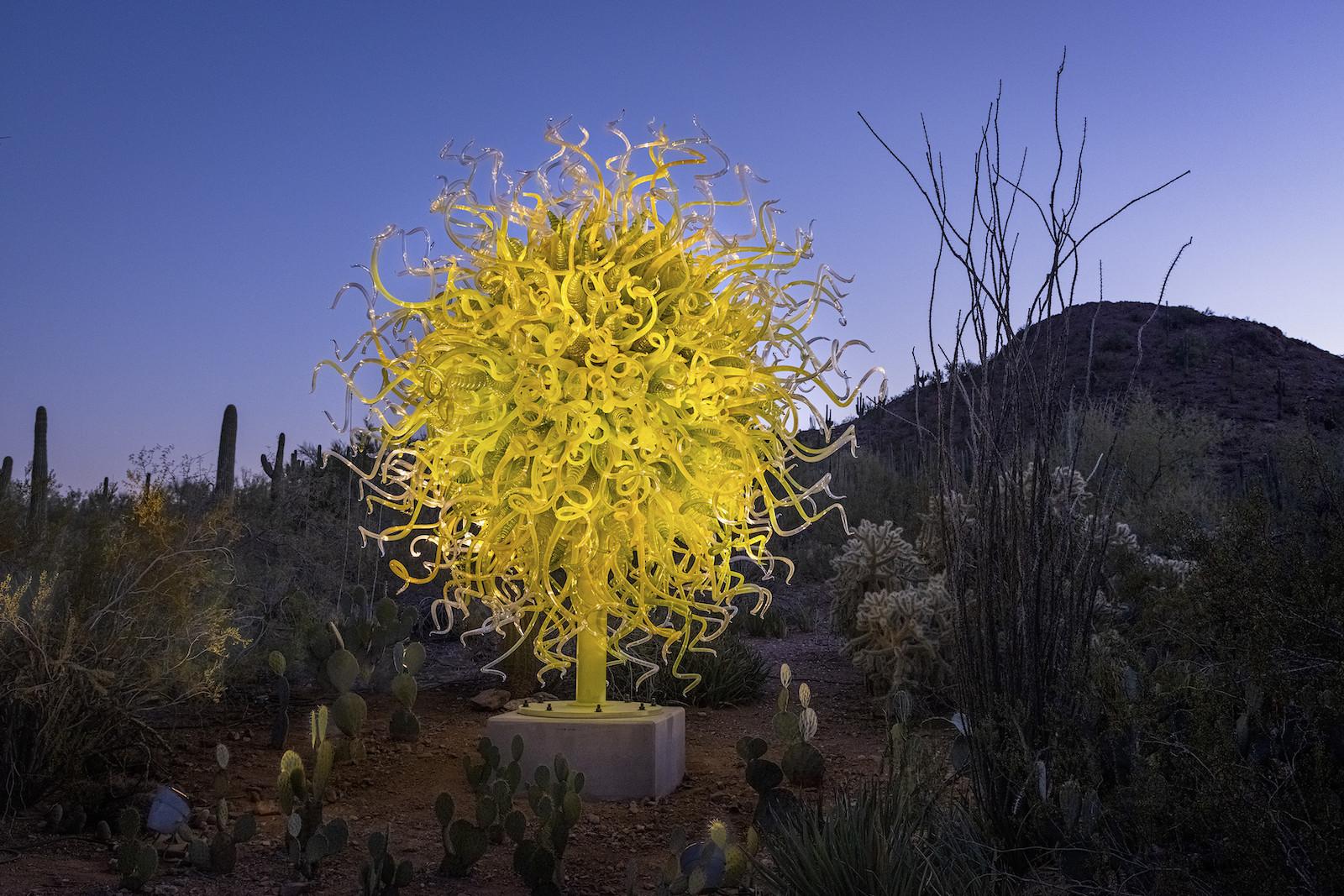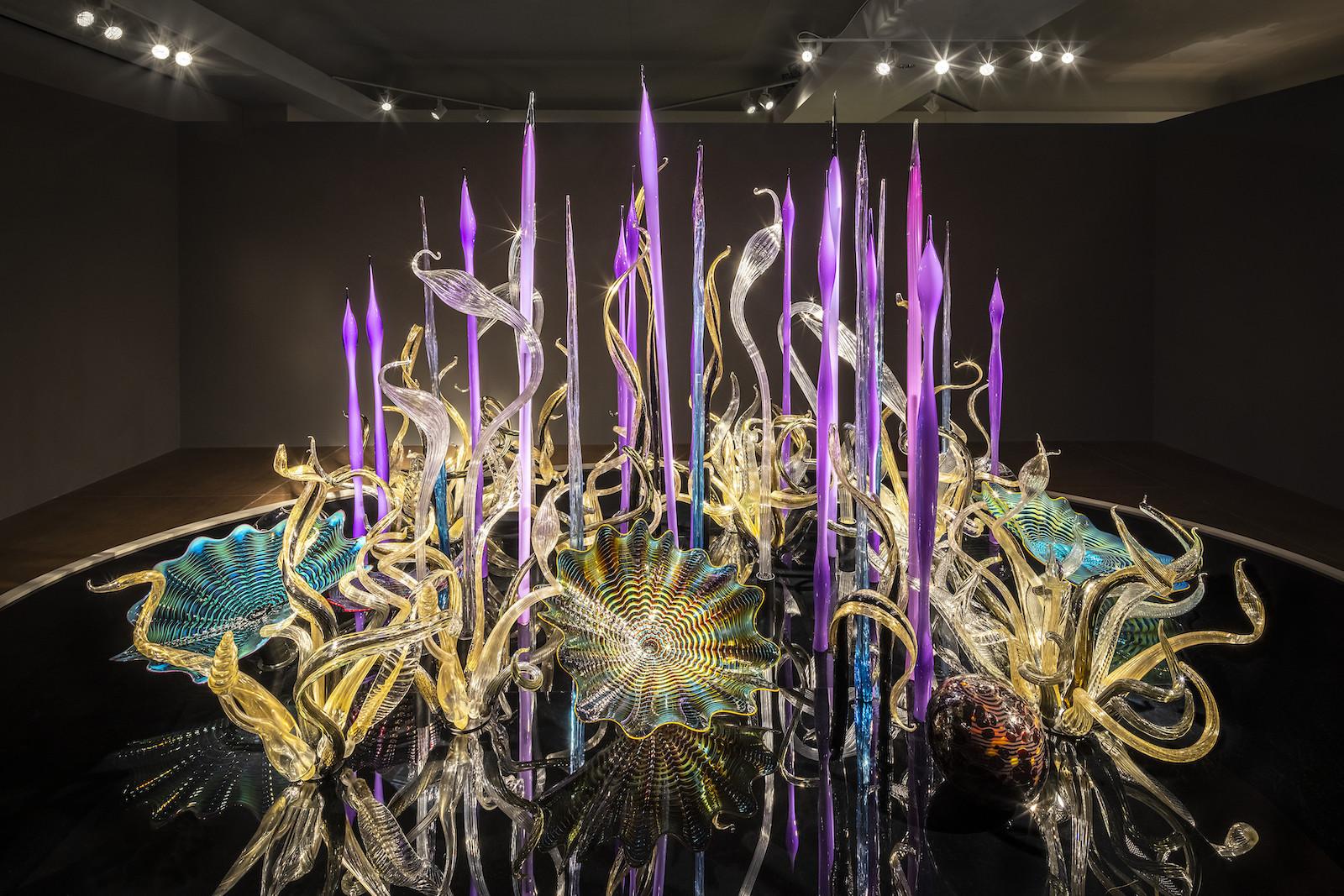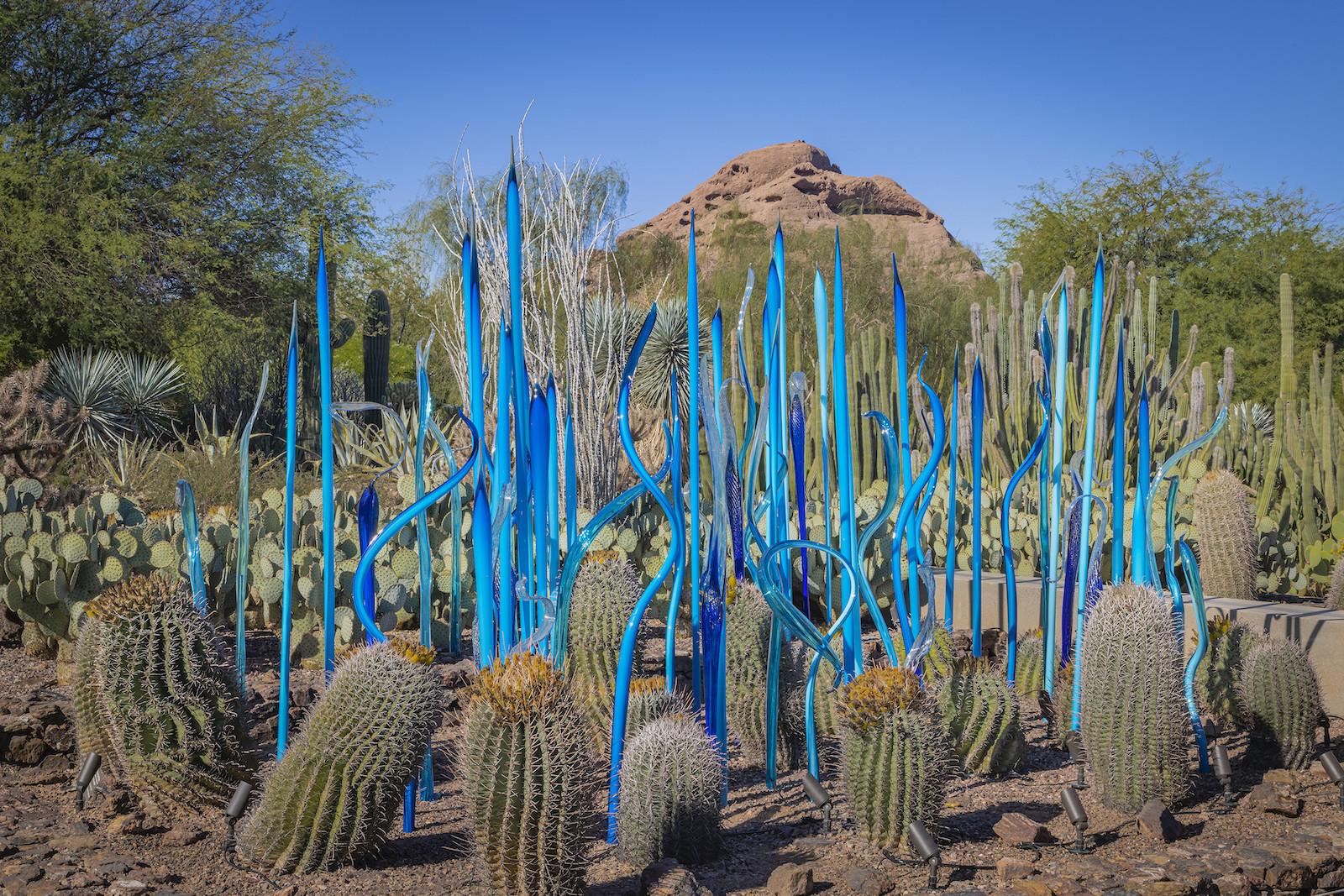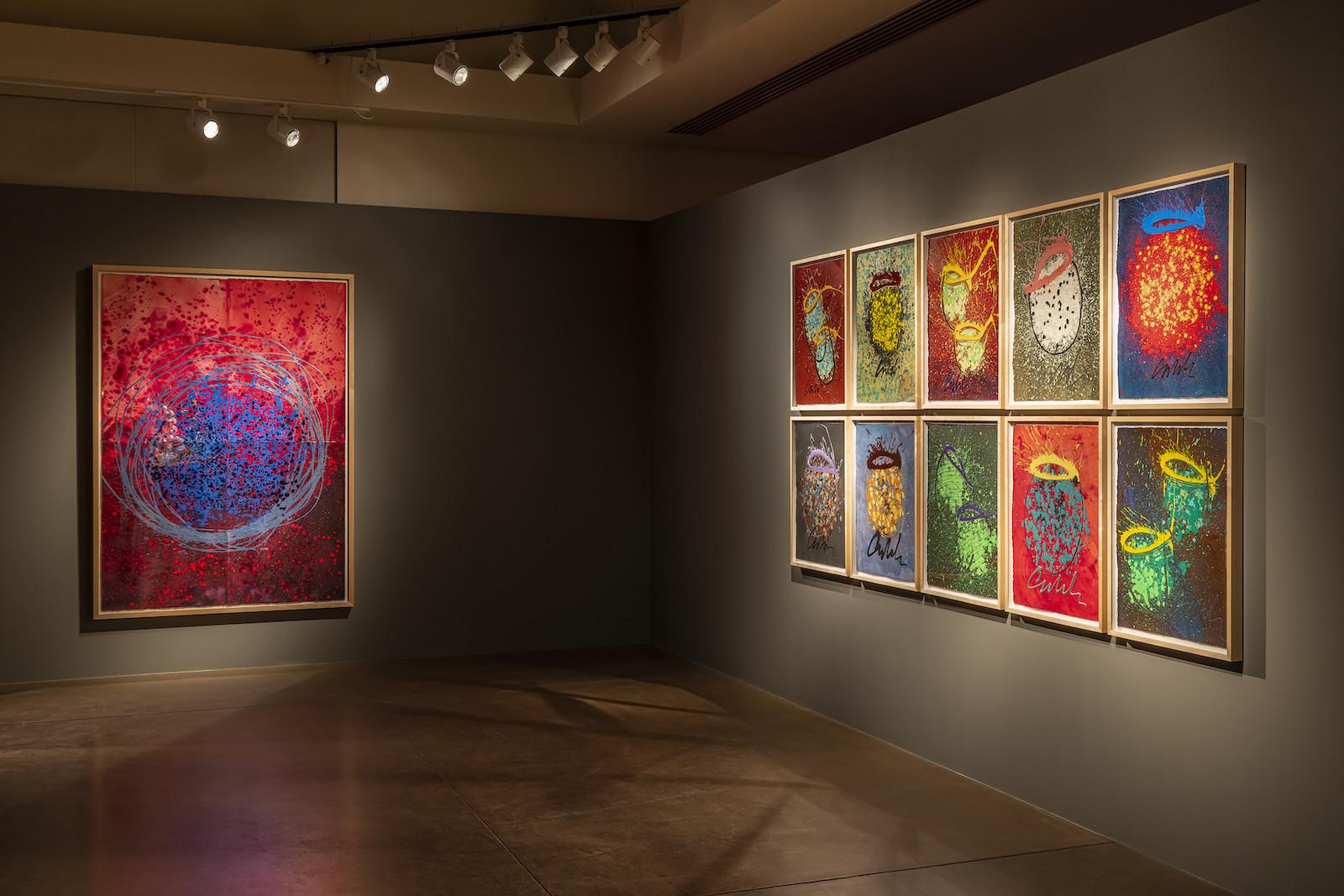Over the long arc of his illustrious career, in exhibitions across the nation and abroad, both indoors and out, Chihuly’s glass has delighted thousands upon thousands of visitors at botanical gardens, medical centers, art galleries, bank lobbies, casinos, and other public places.
Chihuly is world-famous for his magnificently colored and often complex glass sculptures. He’s drawn inspiration from jellyfish, rowboats, fishermen’s floats, Navajo blankets, baskets, chandeliers, and sea forms.
He and his team have created thirty-foot-tall spikey or curvilinear towers and monumental glass flowers—or as they’re known in the Italian (a nod to Italy’s influence on Chihuly), Fiori. One of his most well-known works, the Fiori di Como installed on the ceiling of the Bellagio lobby in Las Vegas, staggers the imagination with 2,000 hand-blown glass blossoms. The installation remains one of the artist’s most elaborate public statement pieces.






























![DEl Kathryn Barton [Australian b. 1972] the more than human love , 2025 Acrylic on French linen 78 3/4 x 137 3/4 inches 200 x 350 cm Framed dimensions: 79 7/8 x 139 inches 203 x 353 cm](/sites/default/files/styles/image_5_column/public/ab15211bartonthe-more-human-lovelg.jpg?itok=wW_Qrve3)



